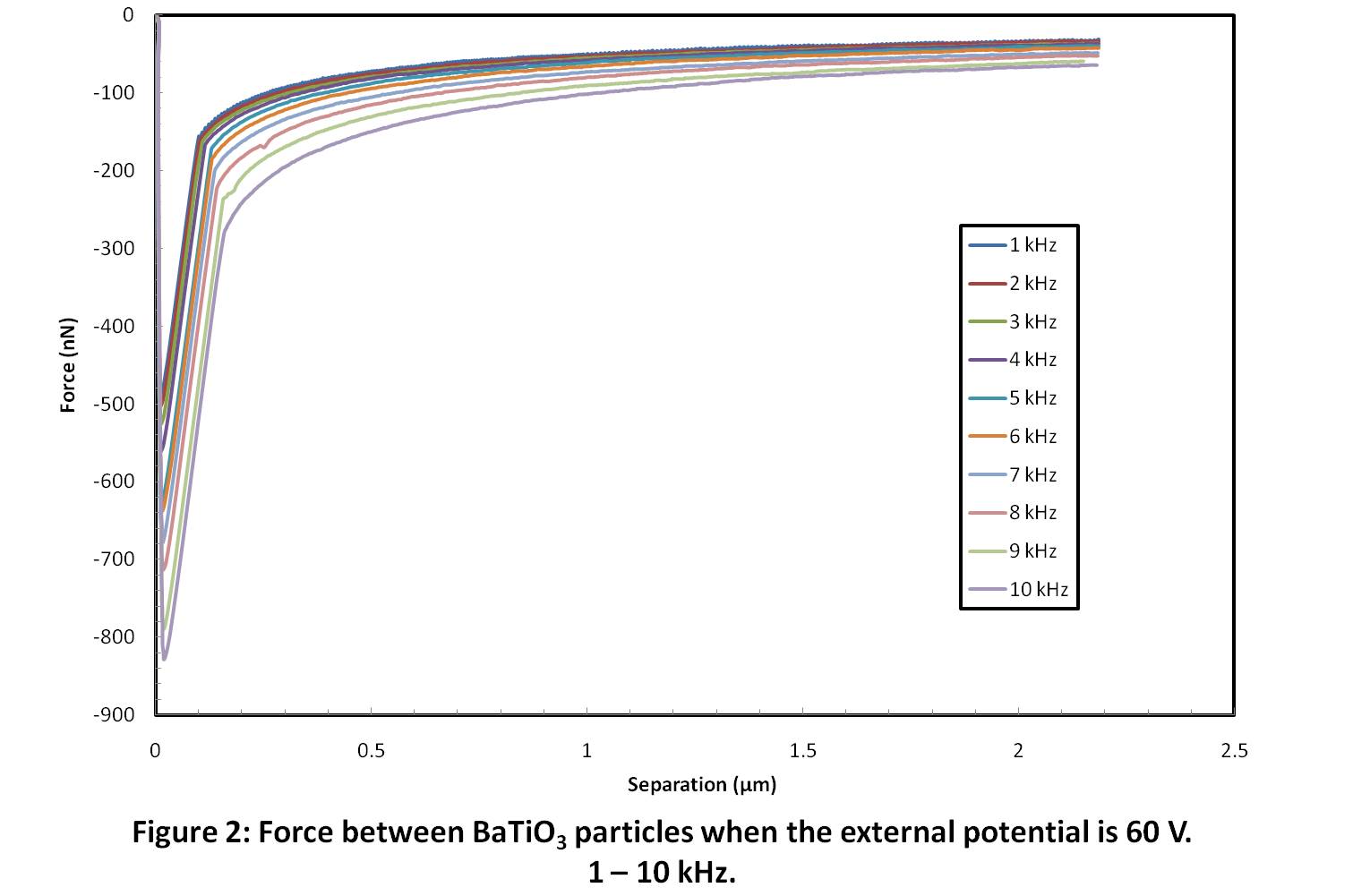www.acsprf.org
Reports: ND549114-ND5: Direct Measurement of the Force between Neutral Dipolar Materials Induced by External Electrostatic Fields
William A. Ducker , Virginia Polytechnic Institute and State University
Solid-solid, solid-liquid, and liquid-liquid separation processes play important roles in the petroleum and mineral industries and dielectrophoresis (DEP) is a promising separation techniques. DEP refers to the translational motion of an uncharged dielectric and/or conductive particle caused by polarization effects in a non-uniform electric field. The principle idea of separation by DEP is that different materials possess different polarizability, thus causing different interactions with the applied electric field and different forces, FDEP, on particles of differing polarizability. In this project, we focus on measuring FDEP between two identical solid particles in the presence of an alternating current (AC) electric field. We investigated the effects on FDEP of electric field frequency and strength, and the separation between the two particles. We expect that quantification of the force will facilitate the industrial embodiment of dielectric separation.





To measure the FDEP as a function of the separation between the two particles, we have introduced electrodes into an atomic force microscope (AFM) and attached particles to the force measuring cantilever and the bottom plate respectively (Figure 1).
Figures 2 and 3 shows the measured FDEP as a function of the separation between the particles and the electric field frequency when there is a 60 V potential between the plates. At low frequencies (1-10 kHz), the force is attractive and the magnitude increases with the frequency (Figure 2). At higher frequencies, the forces become complicated at a separation less than 1 micrometer (Figure 3): the force suddenly increases in magnitude. We speculate that when the particles are close enough (they do not need to touch each other), the local electric field is so high that the dielectric materials could not trap the electrons so that a electric current pass through the gap between the two particles, leaving a different charge on each particle, and producing a repulsive component to the force. This phenomenon is called “dielectric breakdown.” The above observations show the FDEP at small separation (less than 1 micrometer) is very different to that at large separation (longer than 1 micrometer). We believe this is the key point for the efficient dielectric separation process and it worth spending more time on clarifying this phenomenon. In addition, we have also studied the FDEP as a function of frequency and voltage at 2 µm separation between particles (Figure 4). The reason why we choose to use an AC electric field, not a direct current (DC) electric field is that the FDEP would increase with time under a DC field due to the electron accumulation at the interface between two different materials. This phenomenon is known as “Maxwell-Wagner polarization”, “interfacial polarization,” or “space charge polarization.” Only perfect dielectrics would not permit the passage of the particles (e.g., electrons). By tuning the frequency, we could measure repulsive forces at some frequencies. The frequency range that could give the repulsive forces depends on the electric field strength. The stronger the electric field strength is, the wider the frequency range is (as show in Figure 4). Based on the present theory of DEP, we infer that the particles possess layered structure or many defects inside, causing Maxwell-Wagner polarization at each interface and hence complicating the FDEP. We have also analyzed the mathematical relationship between the FDEP and the squared electric field strength (E2) and found the forces are still proportional to E2 (Figure 5) as expected from the theory of DEP. Many issues are still not understood well. Our ongoing effect will focus on the FDEP at small separation, in particular, how the force changes sign with frequency and applied field. The measured forces are very large and hold promise for efficient movement of particles if the forces can be properly understood.